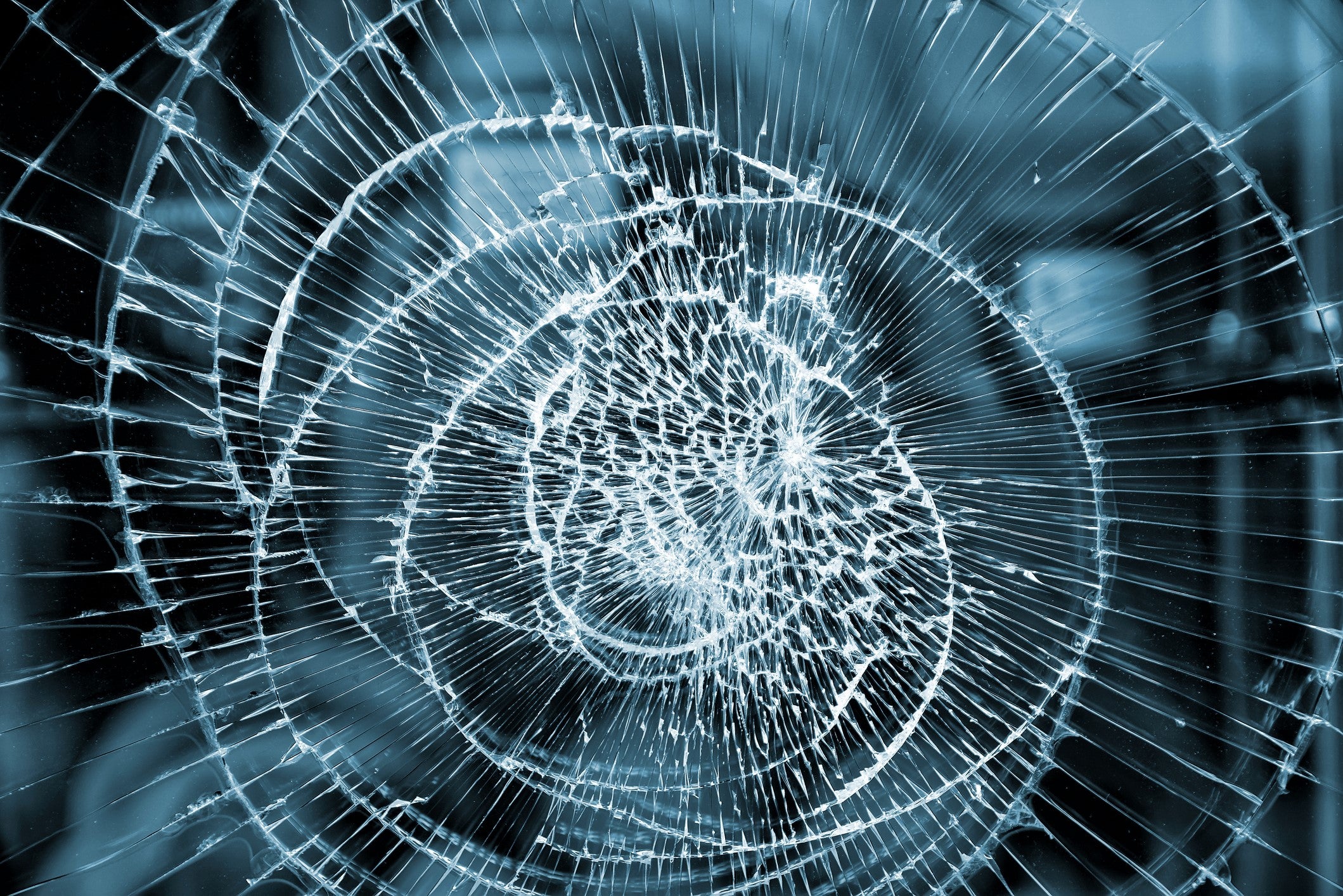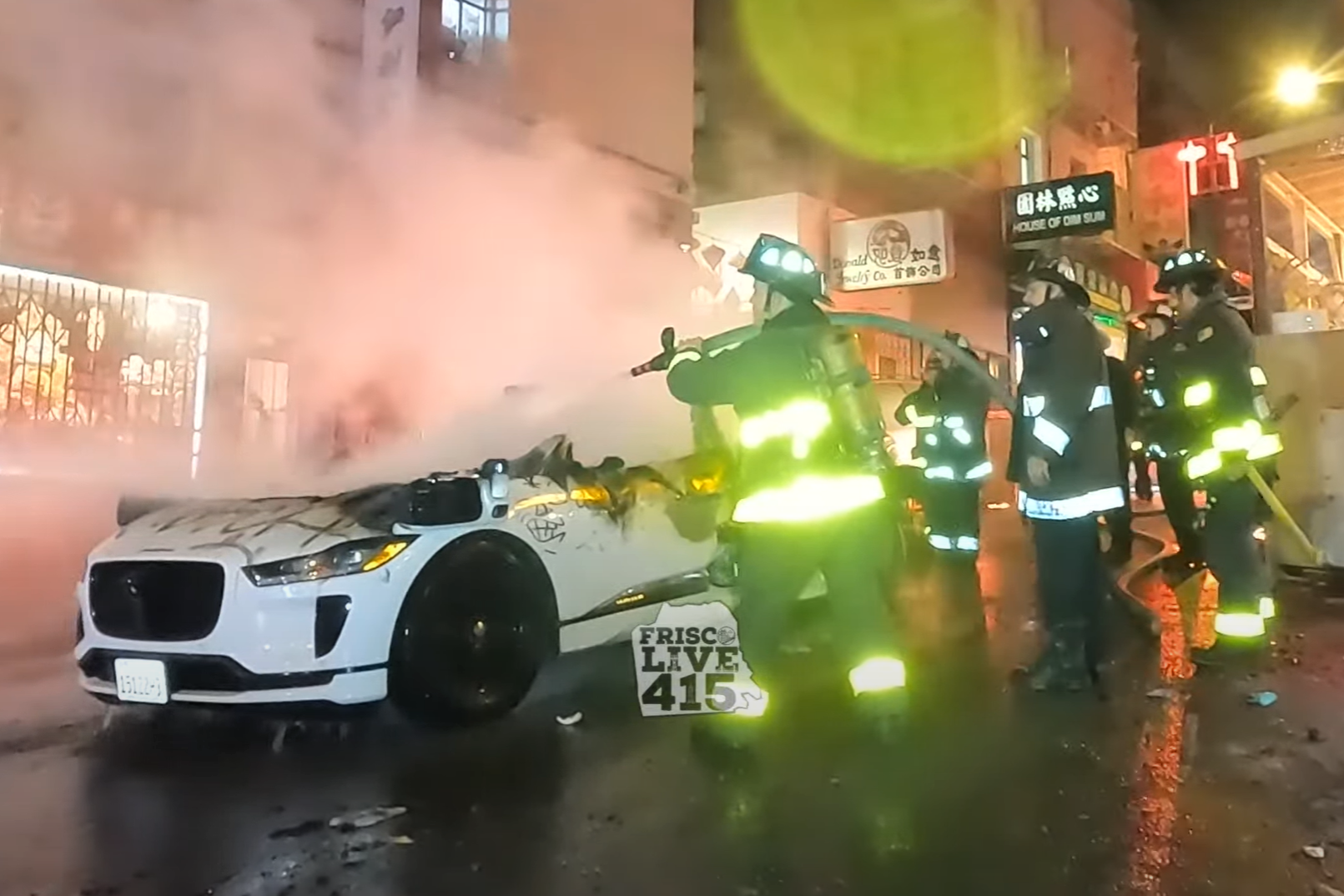Why are people ‘blowing up’ driverless cars in San Francisco?
A spate of bizarre attacks on self-driving vehicles in the city, including incidents of activists disabling robotaxis by placing traffic cones on their bonnet, shows the battle lines have been drawn in the war on Big Tech. Anthony Cuthbertson reports


Last Saturday, a mob in San Francisco surrounded a driverless car, smashed its windows, placed fireworks inside, and torched it. The vehicle, which had no passengers in it at the time, was owned and operated by Waymo – the autonomous driving unit of Google’s parent company Alphabet – and was one of the world’s first fully autonomous taxis. Some believe it was also a symbol of the growing resentment against AI and Big Tech.
It was the latest incident in a spate of attacks on self-driving vehicles in the city, with a group of activists disabling robotaxis last summer by placing traffic cones on their bonnet. Frustrations against the technology come from a wide range of San Franciscans: from city officials who complain they obstruct emergency vehicles to taxi unions who say they will cost human drivers their jobs.
An even bigger fear is that they are putting people’s lives at risk. Writer Rebecca Solnit, who lives in San Francisco, describes their behaviour as “erratic, unpredictable, and unsettling” for other road users. “I also have yet to see a good answer to why we need them,” she wrote on Twitter/X following the torching.
Last week, a Waymo taxi collided with a cyclist in San Francisco, in what was the ninth autonomous vehicle collision in California since the start of the year, according to records kept by the state’s Department of Motor Vehicles (DMV). Last year, there were more than 130 incidents, with some resulting in injuries – and even the death of a dog.

Two of those incidents in 2023 have just prompted the first ever recall for Waymo’s robotaxi fleet. In a bizarre sequence of events last December, two separate Waymo taxis crashed into the same truck within minutes of each other in Phoenix, Arizona. Waymo blamed a “rare scenario” caused by the angle of the truck on the road, which caused the driverless cars to “incorrectly predict the future motion” of the vehicle.
“This voluntary recall reflects how seriously we take our responsibility to safely deploy our technology and to transparently communicate with the public, Mauricio Pena, Waymo’s chief safety officer, said in a statement. “As we serve more riders in more cities, we will continue our safety first approach, working to earn trust and foster transparent communication with our riders, community members, regulators, and policymakers.”
The voluntary recall follows a compulsory recall for Waymo’s rival Cruise, after California’s DMV revoked the licence of the autonomous taxi operator. The ban last November came after one of the vehicles dragged a pedestrian down a San Francisco street.
The state ban led to Cruise’s services in other cities coming to a halt, including Phoenix, which was one of the first two cities in the US alongside San Francisco to legalise the use of robotaxis on public roads. Just like San Francisco, Phoenix is also experiencing its own pushback. Vigilante citizens have also been seeking retribution against the vehicles: slashing tyres, throwing rocks and even pointing guns at them over the past two years.
As driverless ride-hailing trials begin to roll out in Los Angeles and Austin, the discontent against the technology also appears to be spreading to a broader audience.
During the Super Bowl last Sunday, one of the most lucrative spots in advertising was dedicated to a Tesla boycott, which highlighted the dangers of self-driving software. The organisation behind the campaign, called The Dawn Project, uses the motto “Making computers safe for humanity”.
Since the emergence of ChatGPT in late 2022, AI systems have elicited both promise and panic, with one of the most persistent concerns being that they are coming for our jobs. Self-driving taxis are currently one of the only examples of AI-powered machines physically filling the workforce, offering a unique outlet for people to vent their frustrations.
Eyewitnesses of the latest incident said the attack appeared to begin spontaneously, however the manner in which people joined in hinted at underlying grievances.
Investigators are still trying to determine what prompted the attack, which was the most destructive attack on a driverless car in the US so far, though fears are already spreading that it may be the start of something more.
Prominent AI scientist Yann LeCun described the car burning as an “apocalypse *of* the robots, not *by* the robots”, while California-based tech commentator Brian Merchant said the situation in San Francisco was a “tinder box”, and, “someone struck a match”.
“So many people wanted to tear this thing apart, and were willing to do so, publicly and without restraint,” he wrote in a thread on Twitter/X. “This is not mere hoodlumism. It’s not even merely antipathy for driverless cars; [it’s] building on a foundation of activist resistance, and tapping into a wider anger at the totality and unaccountability of Big Tech.”
Just like the machine-smashing luddites in Britain during the industrial revolution, the latest incidents are not necessarily a rebellion against the new technologies, but rather the powers that control them. And just like the industrialists of the 18th and 19th centuries, Big Tech may well be facing its own reckoning.
Join our commenting forum
Join thought-provoking conversations, follow other Independent readers and see their replies
Comments